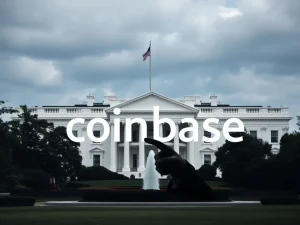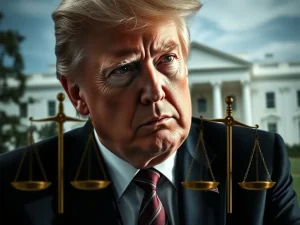Trump Mexico Trade Talks Extended: 25% Tariff Stays, What It Means for Crypto

In a move that has sent ripples through global markets, President Trump has extended the Mexico trade talks by 90 days, maintaining a 25% tariff on automobiles and a 50% tariff on steel, aluminum, and copper. This decision, announced via Trump’s social media platform, has significant implications for trade relations and could indirectly affect cryptocurrency markets as investors seek stability amid economic uncertainty.
What Does the 25% Tariff Mean for US-Mexico Trade?
The 25% tariff on automobiles and 50% on metals remains in place, offering temporary clarity but leaving long-term questions unanswered. Key points:
- The tariff avoids an immediate hike to 30%, which was previously threatened.
- Mexico secured “the best deal possible” but must address non-tariff barriers.
- The U.S. trade deficit with Mexico reached $171.5 billion in 2024.
How Global Trade Uncertainty Affects Cryptocurrency Markets
Trade tensions often drive investors toward alternative assets like Bitcoin and Ethereum. Here’s why:
- Cryptocurrencies are seen as hedges against economic instability.
- Prolonged trade disputes may increase demand for decentralized finance (DeFi) solutions.
- Market volatility could push traders to diversify into crypto assets.
Trump’s Trade Policy: A Cautionary Tale for Future Negotiations
The extended timeline highlights the challenges of navigating an unpredictable trade environment. Without concrete details on resolving non-tariff barriers, the U.S.-Mexico trade relationship remains in flux. This uncertainty could spill over into other sectors, including cryptocurrency, as businesses and investors adjust to shifting policies.
FAQs
1. Why did Trump extend the Mexico trade talks?
Trump extended the talks to allow more time for negotiations, avoiding an immediate tariff hike while maintaining pressure on Mexico to address trade imbalances.
2. How does the 25% tariff impact cryptocurrency markets?
Trade tensions can increase market volatility, driving some investors toward cryptocurrencies as alternative assets.
3. What are non-tariff barriers?
Non-tariff barriers include regulatory hurdles, such as delays in approving medical devices, that restrict trade without direct tariffs.
4. Will other countries face similar tariffs?
Countries like Norway and Switzerland remain in limbo, awaiting potential deals before the next deadline.
5. How can businesses prepare for ongoing trade uncertainty?
Diversifying supply chains and exploring decentralized financial tools may help mitigate risks.








